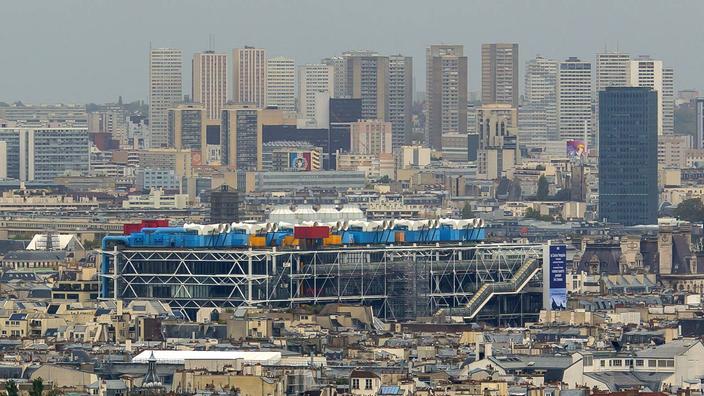Sources of notoriety and often lucrative, these establishments abroad have been encouraged by the State for fifteen years.
From Beaubourg to America. By announcing the opening in 2024 of an exhibition space near New York, the Center Pompidou seeks to promote its brand and develop its own resources, an approach encouraged by the State for fifteen years, in a context slowdown in the public wealth. “It has been fifteen years that the reflection is carried out on the valuation of the intangible heritage”, notes Cécile Anger, law researcher at the Sorbonne and responsible for branding and patronage at the Domaine national de Chambord.
Read also :Three years of closure for the Center Pompidou
The best-known example is the Louvre Abu Dhabi, inaugurated in November 2017. The agreement between Le Louvre and the emirate for a period of thirty years includes support from teams for the design of the museum and loans from the “Mark” of the Louvre and works from thirteen French national museums involved. In these partnerships – The Louvre or the Center Pompidou -, “The brand is used to name the new museum”, notes the researcher. The sending institution provides “An intellectual service, namely the knowledge and skills of its curators, restorers, mediation professionals”, adds Cécile Anger.
“A museum is not profitable and is not intended to be”
Cecile Anger
What is the money collected for? “A museum is not profitable and is not intended to be so, emphasizes the expert. Its commercial activities must serve its primary missions, namely the reception of the public and the conservation of works. ” The money earned through the partnership with Abu Dhabi (one billion euros, including 400 million euros for the concession of the name of the Louvre) “Made it possible to finance the construction of the reserve center [Louvre Paris] in Liévin “, in the north of France, says Cécile Anger.
Emerging countries in the lead
France does not have a monopoly on these partnerships. Thus, the great London museum Victoria & Albert Museum has a gallery in its name in a museum near Shenzhen, a city next to Hong Kong. The V&A assisted in the design of the Chinese establishment. The countries most interested in this type of partnership are the emerging countries, argued the Court of Auditors in a report in 2019. It cited Brazil, China, the Gulf region and mentioned a “World museum market”. In 2018, Emmanuel Macron and the Crown Prince of Saudi Arabia, Mohammed ben Salman, signed an agreement for a cultural and tourist complex on the archaeological site of Al-Ula, another form of enhancement of French cultural know-how.
Read also :Louvre Abu Dhabi, a museum of human history
The Louvre created in 2015 a department called “Louvre council” designed to carry out consulting activities for other museums in France and abroad. Universcience (Palais de la Découverte, Cité des sciences) exports its program “The City of Children”, intended for young audiences, with foreign establishments. Without forming partnerships like the Center Pompidou, the Musée d’Orsay sells exhibitions. So “Monet, the landscape in question” will be presented at the Artizon Museum in Tokyo next year. The Picasso Museum did the same and was able to finance its restoration work. But only establishments with large collections can undertake this type of project.
These loans are admittedly the subject of criticism, but “This is not about cession”, recalls Cécile Anger. France benefits “A protective legal regime” : “French law prohibits the transfer of works” to be sold, for example, a practice that can be found in several major American museums.
– .

